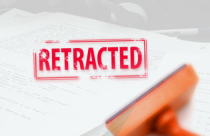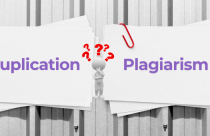Are Paraphrasing Tools Affecting the Development of Academic Writing Skills?

Paraphrasing is the ability to take in, comprehend, synthesize, and express information in an original manner. The ability to paraphrase, whether orally, visually, or in writing, is directly related to how well the material has been understood. It is also related to skill. Formal language usage—complete sentences, proper punctuation, capitalization, etc.—is on the decline in modern communication. Texting, Twitter, use of emojis, and the penchant for abbreviation all serve to make modern communication more efficient, but perhaps less complete. Regardless, this trend is making it even more difficult for students to learn and practice the skills necessary for academic writing.
Academic work requires the writer to incorporate the texts of published authors into the material of their own, reflecting a comprehensive understanding of the published material, which is used to support his or her ideas in an original manner. Although it is difficult, it is a skill that every student should be taught and taught well as it builds critical thinking, competence, and the ability to express one’s self in a meaningful way.
Online Paraphrasing Tools
It seems, however, that people will always try to find a way around doing the difficult work necessary to build those writing skills. Outright plagiarism and the use of online sites where one can either purchase an essay or have one written have provided a path to the latest means of avoiding actual writing: paraphrasing tools. These tools can paraphrase anything from a simple sentence to an entire essay. The practice has come to be known as “essay spinning.” (Rogerson & McCarthy, 2017) Some examples are EZ Writer, Ant Spinner, and Word Flood (Bilokon, 2016). While these tools may seem helpful to students, particularly to non-native English speakers, they are flawed, inaccurate, and should not be considered as a substitute for learning to paraphrase on one’s own. However, with such heavy reliance on machines to do much of the work our brains used to do, for some, these tools seem perfectly acceptable. When advocating the use of a paraphrasing tool to avoid plagiarism, it is important that the original source material is properly cited in the work. However, there is no comparable mechanism that can detect the usage of a paraphrasing tool if the reader suspects the writing is not original and the source material is not cited.
Plagiarism and Techniques for Paraphrasing
The handbooks of universities and colleges should contain a section on plagiarism—identifying the criteria by which plagiarism is assessed and outlining the penalties for infraction. Generally, higher education has a zero-tolerance policy when it comes to plagiarism.
The question is, then, does the use of an online paraphrasing tool constitute plagiarism? Certainly, if the original source material is not cited, the work can be considered plagiarized. However, the use of a paraphrasing tool means that the writing is not truly original or attributable to the author. This becomes a gray area and a new frontier of plagiarism for which the handbooks must be revised. Furthermore, self-checking manuscripts for plagiarism using plagiarism checker tools prove beneficial.
The library resource of Simon Fraser University lays out seven techniques along with a caution that should be followed when paraphrasing:
- Change a word from one part of speech to another
- Use synonyms
- Change numbers and percentages to different forms
- Change word order
- Use different definition structures
- Use different attribution signals
- Change the sentence structure and use different connecting words
Caution: When paraphrasing, do not change key terms or proper nouns.
These skills and techniques should be taught and reinforced in every class where students are expected to write. This is especially critical for non-native English speakers who may be more concerned with the accuracy of their writing than with expressing themselves in an authentic manner. Online paraphrasing tools will be a tremendous temptation for this community of learners.
Educational Integrity Experiment
In January 2017, Ann M. Rogerson and Grace McCarthy published an article in Springer Open’s International Journal for Educational Integrity (IJEI). The authors had not known that such tools existed until a student asked if their use was acceptable. They set out to examine how the paraphrasing sites worked, how the output of two of them compared with one another, and if the use of such tools could be identified in the resulting text.
Taking a sample paragraph from a piece the authors had published in a prior edition of the IJEI, with one in-text citation included, and three bibliographic entries from the reference list of that piece, they used Google to select two paraphrasing sites and submitted the paragraph. The authors examined the resulting output by measuring, among other things, total word counts, total word matches, and the percentage of similarity to the original paragraph. Then, they used Turnitin (an online plagiarism tool) to see if the original source could be identified. Results of the word/language measurements can be seen in the table below.
Table 1: Comparison of paragraph elements
| Source | Total words | Words the same as original paragraph | Percentage of word similarity to original paragraph |
| Original paper | 153 | ||
| Tool 1 | 158 | 77 | 50% |
| Tool 2 | 173 | 46 | 30% |
Aside from the comparisons above, the quality of the output was not very good. The authors likened it to “patchwriting,” in which there is a sort of patchwork of original and replaced language but no cohesiveness. In addition, Turnitin could not detect the original source material from the paraphrased output. However, because the bibliographic language was largely untouched, Turnitin was able to match the output to the original source using only the reference data. Fundamentally, these paraphrasing tools will continue to tempt students who are unsure of their writing skills. Rogerson and McCarthy suggest that educators should start addressing this issue by simply acknowledging to their students that they are aware of the existence of these tools. Candid discussion regarding the improper use of these tools should accompany direct instructions on paraphrasing techniques.
Teaching proper paraphrasing methodology should be complemented by instructors providing clear assessment tools and constructive feedback. The authors also suggest that there might be an oral component to assessment. Professors can collaborate to identify certain markers in the use of paraphrasing tools. This can provide a starting point to discuss original writing vs. plagiarism with students. The future of academic integrity is at risk when the use of electronic tools is allowed to supersede authentic academic writing. Paraphrasing is a skill that encompasses much more than good writing—it enables learning, thinking, and expression at a higher level. This is what is required for academic work.
References:
- Ann Rogerson (2017, January 26) Free Internet based paraphrasing tools: further threats to academic integrity. Retrieved from http://blogs.biomedcentral.com/bmcblog/2017/01/26/free-internet-based-paraphrasing-tools-further-threats-to-academic-integrity/
- Academic Integrity at MIT. Avoiding Plagiarism – Paraphrasing. Retrieved from https://integrity.mit.edu/handbook/academic-writing/avoiding-plagiarism-paraphrasing
- The University of Wisconsin – Madison Writing Center (2016, December 22) The Writer’s Handbook Avoiding Plagiarism. Retrieved from http://writing.wisc.edu/Handbook/QPA_paraphrase.html
- Daria Bilokon (2016, January 22) Paraphrasing Software to Avoid Plagiarism Turns to Be of Great Help.











Amazing blog that you have written. I appreciate the proficiency in your work and I look forward to reading more of your articles in the future. Thank you for sharing.
Definitely, agree with you! Instead of making things easier a lot of paraphrasing tools make it a lot harder. I’ve tried some of them just to see how do they work; Some of them also change the sequence of words instead of just using synonyms. These tools don’t worth the time you spend on them
It is true that the paraphrasing tools are not accurate. However, they can be quite useful on a tight schedule since it is easier to correct he paraphrased work than do the entire work yourself.
I have learned a lot with your help. Also I have been improving my writing.